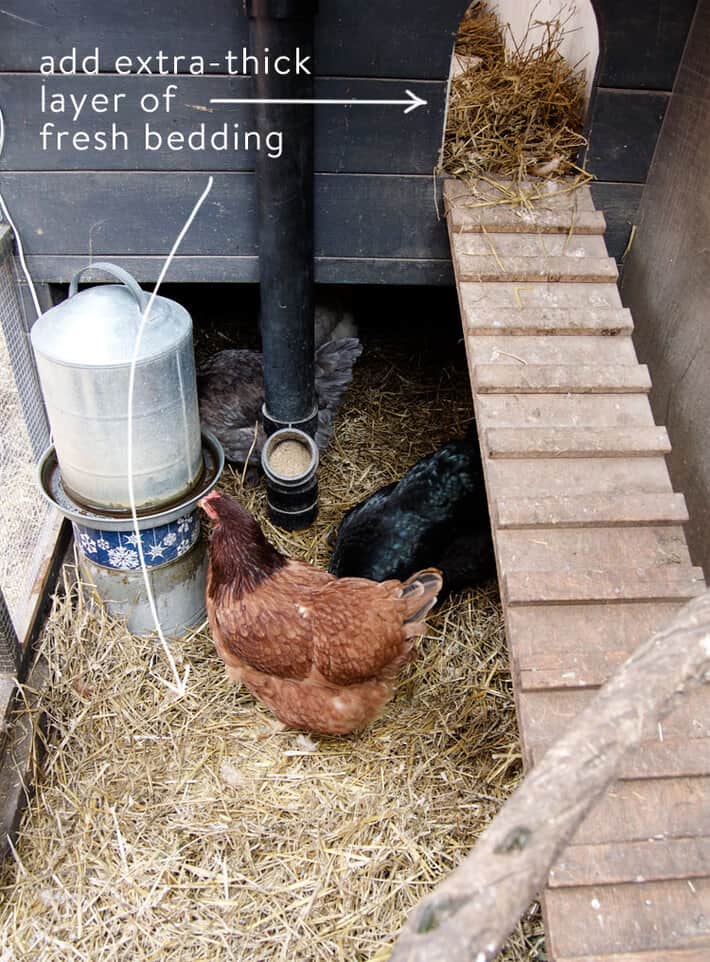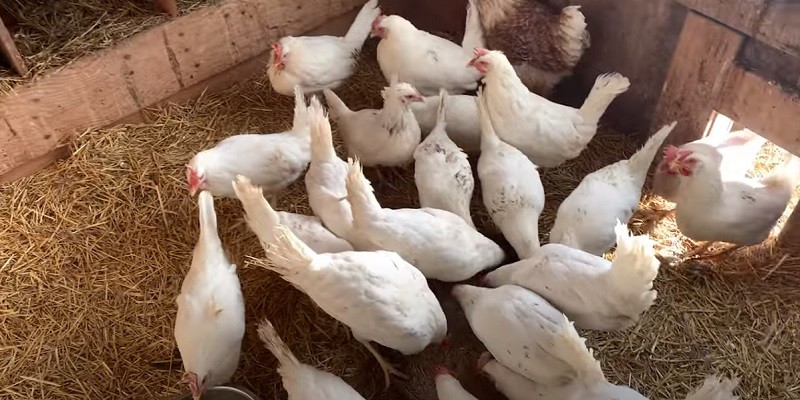Last Updated on April 23, 2025 by Pauline G. Carter
To insulate a chicken coop for winter, start by sealing any drafts, adding insulation to the walls and roof, and using deep bedding for extra warmth. Consider using heat lamps or a heated water source to keep the coop comfortable for the chickens during colder months.
The goal is to keep the coop dry, well-ventilated, and secure to protect the chickens from extreme cold weather. As winter approaches, it’s crucial to ensure that your chicken coop is well-insulated to protect your feathered friends from the harsh weather conditions.
By taking a few simple steps to properly insulate their living space, you can create a comfortable and safe environment for your chickens to thrive in during the winter. We’ll explore some effective methods for insulating a chicken coop, allowing you to provide the necessary warmth and protection for your flock.
The Importance Of Insulation
Impact Of Cold Weather On Chickens
In cold weather, chickens struggle to maintain their body temperature, which can lead to stress, reduced egg production, and even illness. As the temperature drops, chickens may consume more feed to generate heat, diverting energy away from egg production. This can influence overall flock health and productivity.
Optimal Temperature For Chickens
Chickens thrive in temperatures between 55-75°F, making it crucial to maintain a suitable environment to support their natural physiology. An insulated coop can help regulate the internal temperature, ensuring that chickens can thrive even in colder climates.
Consequences Of Inadequate Insulation
Inadequate insulation in a chicken coop during winter can lead to a range of issues. Chickens may suffer from frostbite on combs and feet, reduced egg production, and an increased likelihood of respiratory problems due to the damp, cold environment. Moreover, cold stress can weaken the birds’ immune systems, making them more susceptible to diseases.
Choosing The Right Insulation Materials
When it comes to insulating your chicken coop for winter, one of the most crucial decisions is selecting the right insulation materials. The choice you make will directly impact the warmth and comfort of your feathered friends during the cold months. Here’s a guide to help you make an informed decision on the best insulation materials for your chicken coop.
Types Of Insulating Materials
There are various types of insulating materials available in the market, each with its own set of benefits and drawbacks. Some commonly used options include:
- Fiberglass: Provides excellent thermal insulation and is relatively affordable.
- Foam Board: Offers high R-value and can be easily cut to fit into different spaces.
- Reflective Foil Insulation: Helps in reducing radiant heat and is suitable for use in conjunction with other insulation materials.
- Spray Foam: Ideal for filling in small gaps and hard-to-reach areas.
Factors To Consider When Selecting Insulation
When choosing insulation materials for your chicken coop, it’s essential to consider several factors to ensure the effectiveness and safety of the insulation. Consider the following:
- R-Value: Look for materials with a high R-value to provide better insulation against the cold.
- Moisture Resistance: Opt for materials that are resistant to moisture to prevent mold and mildew growth.
- Durability: Choose materials that are durable and will withstand the wear and tear of a chicken coop environment.
- Fire Safety: Prioritize materials with fire-retardant properties to ensure the safety of your coop.
Sustainable And Safe Options For The Environment
Aside from insulation effectiveness, it’s also important to consider the environmental impact of the materials. Opt for sustainable and safe options such as:
- Natural Wool: Provides excellent insulation and is biodegradable, making it an eco-friendly choice.
- Recycled Cotton: Utilizes recycled materials and is free from harmful chemicals, promoting a healthy environment for your chickens.
Methods Of Properly Insulating The Chicken Coop
Proper insulation is essential to keeping your chickens warm and healthy during the cold winter months. By insulating the walls and ceiling, sealing cracks and gaps, and insulating the flooring and nesting areas, you can create a cozy and comfortable environment for your feathered friends. Let’s dive into each of these methods in this article.
Insulating The Walls And Ceiling
Insulating the walls and ceiling is crucial in keeping the cold out and the warmth in. Consider using insulating materials such as fiberglass batts, foam board, or spray foam insulation. These materials can be installed between the studs and rafters to provide a barrier against the cold. Make sure to cover the entire surface area of the walls and ceiling to prevent any draft from seeping in.
Sealing Cracks And Gaps
Check for any cracks or gaps in the chicken coop where cold air might enter. Use caulk or weatherstripping to seal these openings. Pay close attention to areas around windows, doors, and vents, as these are common areas for drafts to occur. By effectively sealing these gaps, you can help maintain a comfortable temperature inside the coop.
Insulating The Flooring And Nesting Areas
Insulating the flooring and nesting areas is essential to provide a warm and cozy space for your chickens to roost and lay eggs. Consider adding a layer of straw or wood shavings to the nesting boxes to provide extra insulation. Additionally, you can use foam board or rubber mats beneath the coop’s flooring to prevent heat loss to the ground. This will help keep your chickens comfortable and protected from the chilly ground temperatures.

Credit: www.theartofdoingstuff.com
Maintaining A Cozy And Warm Environment
As the temperature drops, it’s crucial to prioritize the warmth and comfort of your chickens by insulating their coop during the winter months. Ensuring a cozy and warm environment is essential for their well-being and egg production. Here are some key strategies to maintain an optimal environment in the chicken coop.
Monitoring Temperature And Humidity Levels
Regular monitoring of the temperature and humidity levels inside the chicken coop is essential for assessing the comfort level of the birds. Utilize a reliable thermometer and hygrometer to keep track of these parameters. Ideally, the temperature within the coop should be maintained at around 50-60°F to prevent the chickens from getting too cold. Additionally, monitoring humidity levels ensures that the environment remains dry, preventing any dampness that can contribute to cold stress in the birds.
Implementing Additional Heating Methods
To provide additional warmth, consider implementing heating methods such as an infrared lamp or a radiant heater. These can be strategically placed in the coop to create localized warmth and ensure that the chickens are not exposed to extreme cold. It’s important to carefully follow manufacturer guidelines and safely position heating sources to prevent any fire hazards or injuries to the birds. Inspecting the heating equipment regularly to ensure proper functioning is vital for maintaining a cozy environment.
Ensuring Ventilation And Air Quality For Chickens
Proper ventilation is crucial in maintaining a comfortable and healthy environment for the chickens. Installing adjustable vents allows for regulating airflow and preventing excessive moisture buildup. It’s important to balance ventilation with insulation to minimize drafts while maintaining fresh air circulation. Additionally, regularly cleaning the coop and removing bedding helps in maintaining good air quality and preventing any respiratory issues in the birds.
Frequently Asked Questions On How To Insulate A Chicken Coop For Winter?
How Can I Insulate My Chicken Coop For Winter?
To insulate your chicken coop for winter, use straw, insulating foam, and ensure the coop is well-ventilated.
What Materials Are Best For Insulating A Chicken Coop?
The best materials for insulating a chicken coop are straw bales, insulated foam boards, and thick blankets.
Is It Necessary To Insulate A Chicken Coop For Winter?
Yes, insulating a chicken coop is necessary to protect the chickens from cold temperatures and harsh weather conditions.
How To Prevent Moisture Buildup When Insulating A Chicken Coop?
Prevent moisture buildup by ensuring proper ventilation and using moisture-resistant insulation materials like straw and wood shavings.
Can I Use A Heat Lamp To Keep The Chicken Coop Warm?
Yes, you can use a heat lamp, but ensure it’s installed safely and at a height where the chickens can’t accidentally touch it.
What Are The Potential Risks Of Improper Insulation In A Chicken Coop?
Improper insulation can lead to frostbite, respiratory issues, and lower egg production in chickens during winter. Insulate properly to avoid these risks.
Conclusion
Ensuring your chicken coop is properly insulated is crucial for keeping your feathered friends warm during the winter months. By implementing the right insulation materials and sealing any gaps, you can create a cozy and comfortable environment for your chickens.
With proper insulation, you can provide a safe and happy home for your poultry all winter long.

